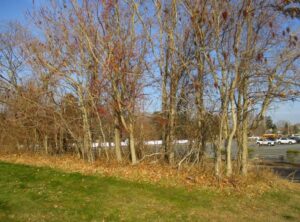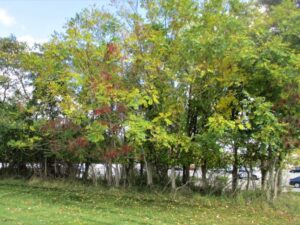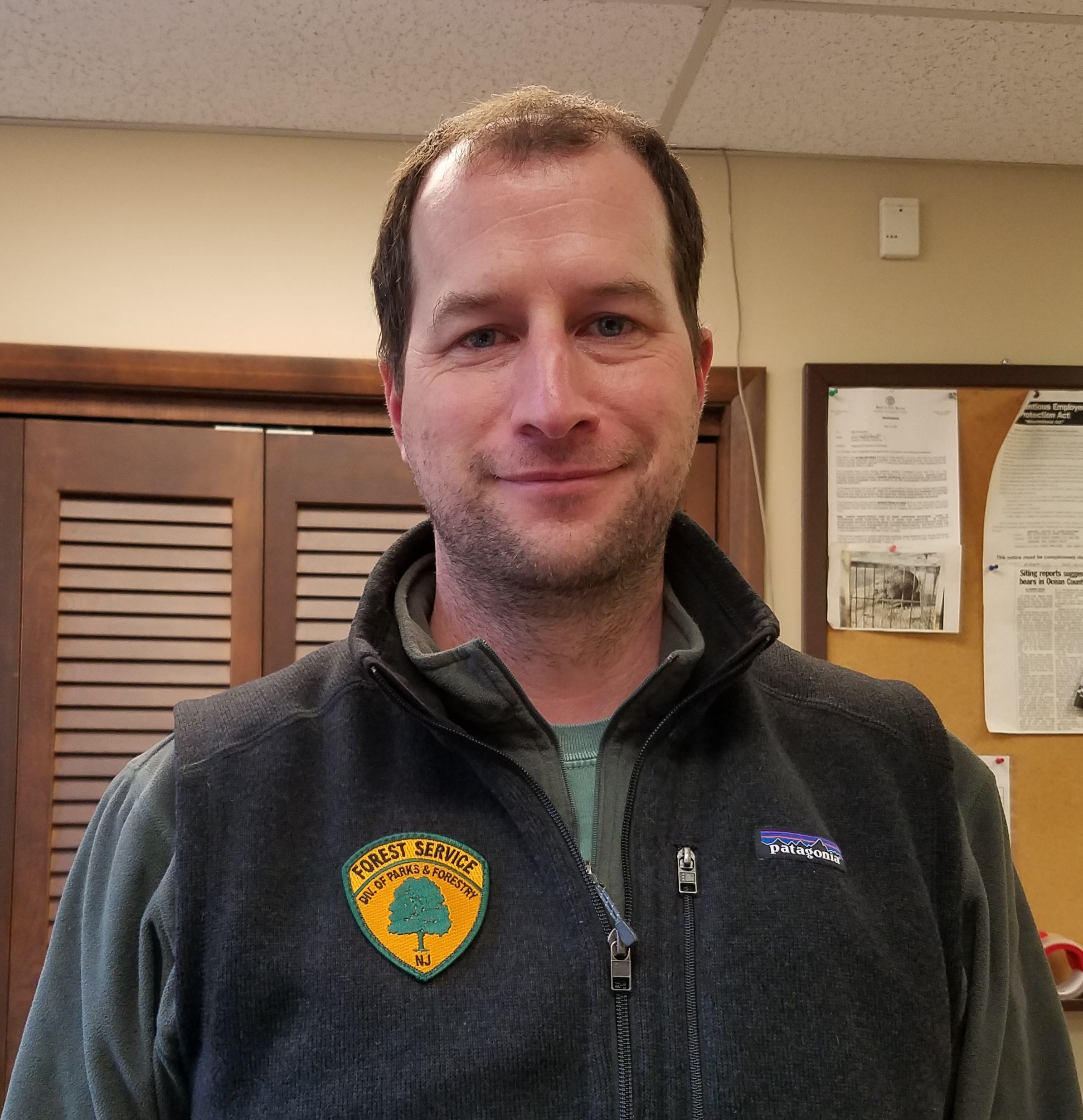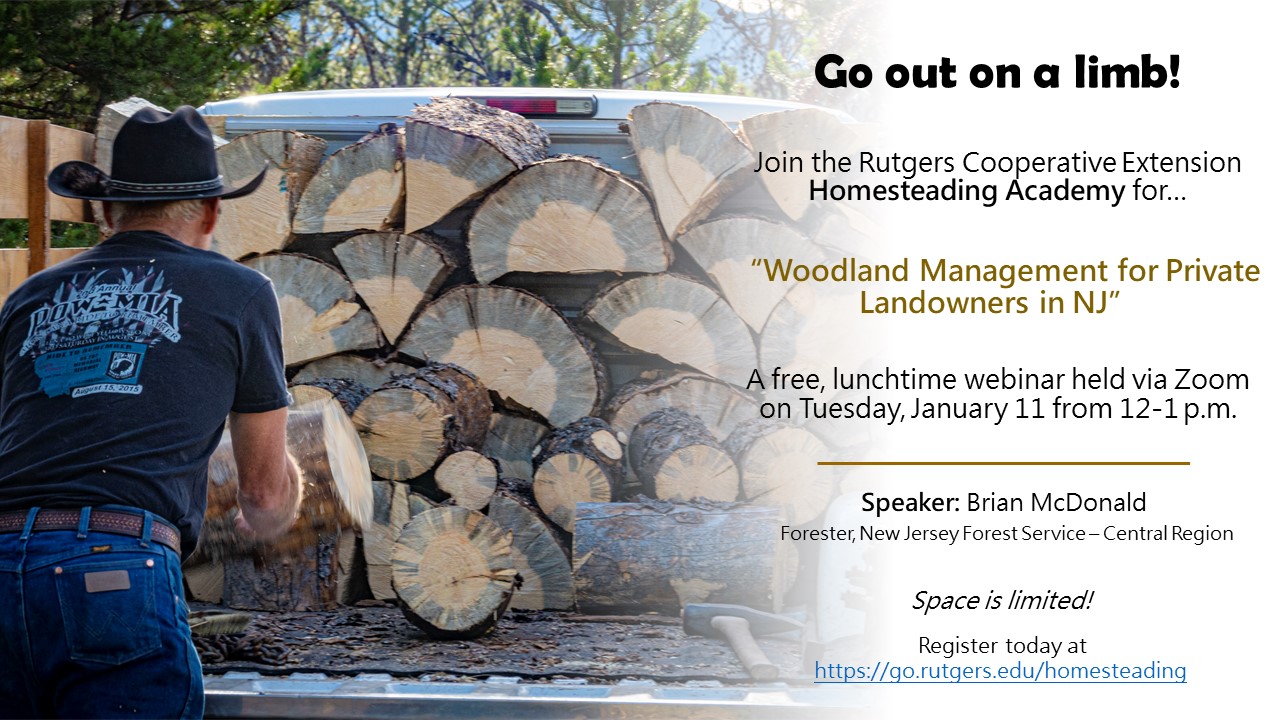Removing the Tree-of-Heaven (TOH):
During the winter, arborist companies will often take advantage of the slow season and perform needed tree removal services for clients. However, these professionals know when dealing with the tree-of-heaven (Ailanthus altissima) the off-season is only a suitable time for removal if a previous herbicide treatment was applied during the late summer or early fall seasons (i.e., mid-July to mid-October). Then during the off-season, the trees can be cut & removed from mid-November thru April (Figure 1).

(Fig. 1) The cutting & removal of this cluster of tree-of-heaven trees should only be done in the winter if herbicide treatments were applied during the late summer or fall seasons. (Photo Credit: Steven K. Rettke, Rutgers Coop. Ext.)
If a tree-of-heaven (TOH) is cut & removed without first using an herbicide & waiting at least 30 days, then the tree will respond with potentially dozens of trunk sprouts & root suckers that could emerge 50-feet from a large parent tree. Applying the herbicide during mid-July to mid-October when the tree is most actively translocating photosynthates to the root system will allow the herbicide to move further distances most effectively through the phloem. This will help reduce problems with trunk sprouts & root suckers which this tree species is notoriously known to produce (Figure 2).








